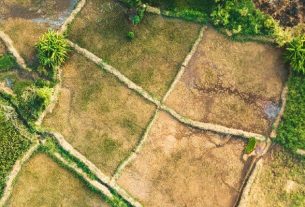Edicson Parra-Sanchez discusses his recent article, ‘Neutral-based processes overrule niche-based processes in shaping tropical montane orchid communities across spatial scales‘:
Orchid species are among the richest and most popular horticultural plants on the planet. They have been featured in films, used as symbols of biodiversity in governmental institutions, and utilized in traditional medicine for centuries. Orchids have also captivated the imagination of many of the most prominent scientists in history from Theophrastus, a student of Aristotle, Dioscorides, a Greek medical botanist, Charles Darwin, John Lindley, Rudoplh Schlechter, and David Attenborough, among many others.
This high diversity has its epicentre in the tropical Americas, and Colombia stands out as the world’s richest country with over 4,200 species. And numbers grow each year with new discoveries. Physical gradients such as the three cordilleras, the diversity of ecosystems like the amazon, the Guyana shield, the Darien Gap, and the high diversity of pollinators and mycorrhizal fungi (necessary for germination and survival) boosted speciation. However, we still do not know how this specious and “charismatic” plant family is currently structured and how it interacts with anthropogenic pressures such as deforestation.
We embarked on an expedition to explore the Colombian Andes to understand Orchid diversity. We found an astonishing 331 species including 11 that are entirely new to science, and six that had never been observed in the wild before. This shows that the natural world has many surprises still awaiting to be discovered.

The majority of these species (87.5%) were found dwelling only in few sites (<5). This finding provides evidence of highly distinct communities even within the same habitat, where communities are mainly composed of a large pool of rare species.
The impact of deforestation is tragic on orchids. We found very low numbers of species still dwelling in deforested sites, indicating that most forest species (between 79–100%) cannot tolerate conditions in deforested areas. This pattern, across scales and elevations, shows that harsh conditions in deforested areas across human-modified landscapes, including lower number of trees for epiphytic species to hang upon and live on, higher temperature and lower humidity (vs natural habitats), have strong effects on orchids.

The primary force driving this pattern is geographical distance, indicating that populations within natural habitats may have very limited dispersal ranges. In fact, it’s known that many orchid seeds land very close to their mother plant (4.8 m on average; Tremblay), with asymmetrical dispersion driven by wind direction (Murren & Ellison, 1998), and low colonisation success (Acevedo et al., 2020).
To sum up, the Colombian Andes still has high level of biodiversity, but high compositional turnover suggests that both forest-dwelling and open-habitat species do not easily disperse across habitats. Therefore, addressing dispersal limitations emphasizes the importance of preserving habitat connectivity to mitigate biodiversity losses. For instance, private protected areas connected to the network of national parks, that are usually large unconnected protected areas, may improve the probability of an adequate number of propagules to disperse across landscapes.
Read the full article online: ‘Neutral-based processes overrule niche-based processes in shaping tropical montane orchid communities across spatial scales‘

